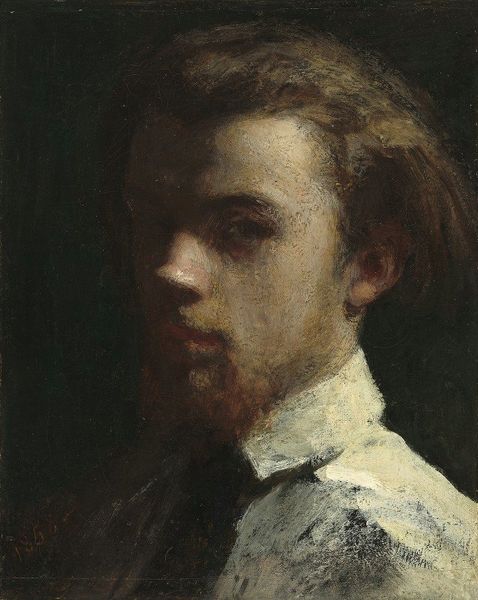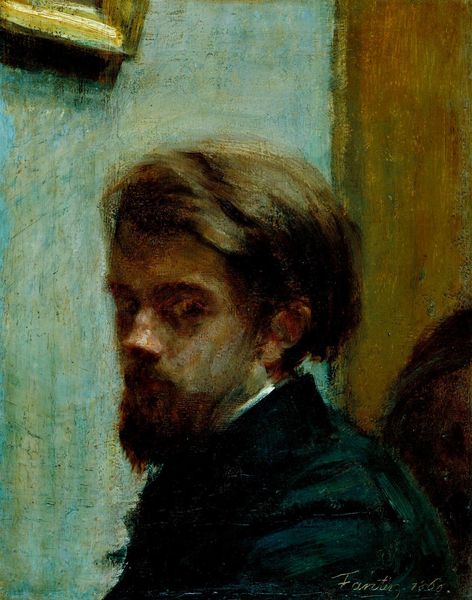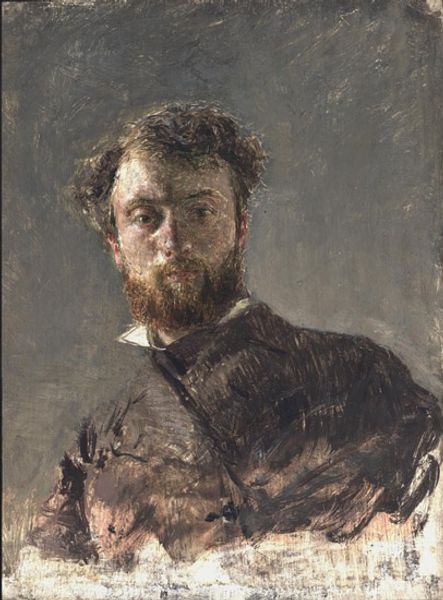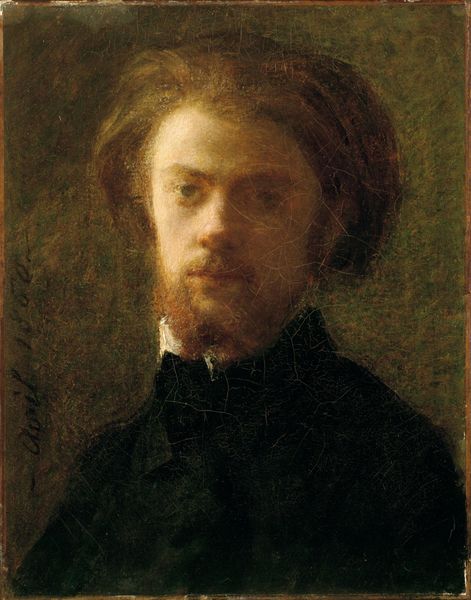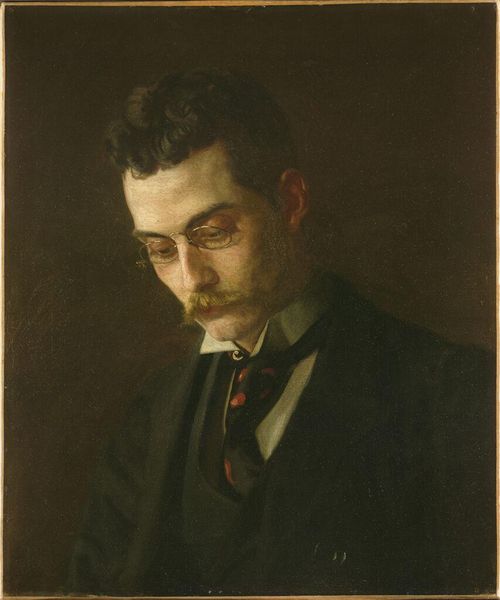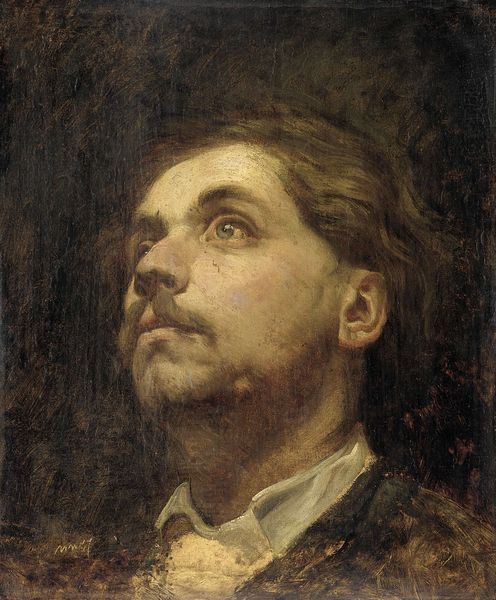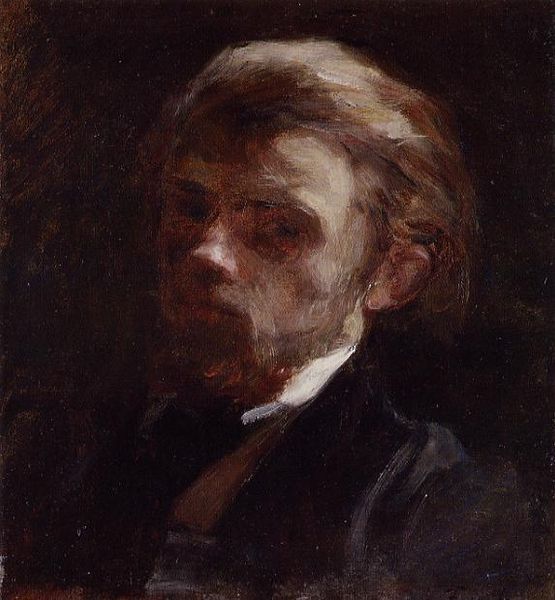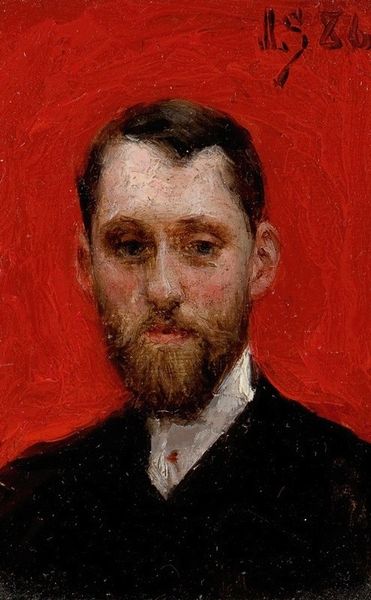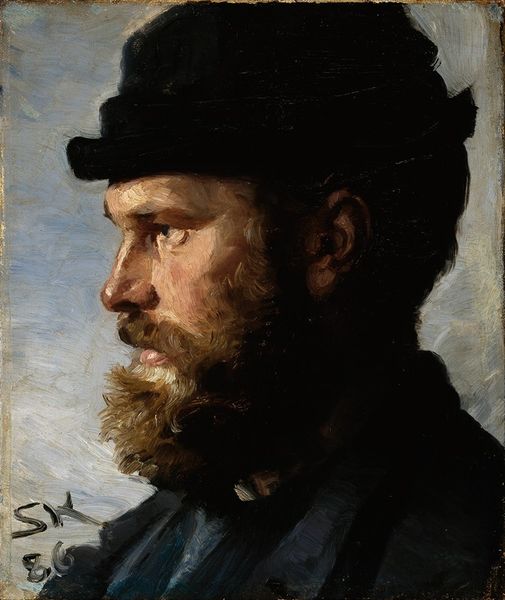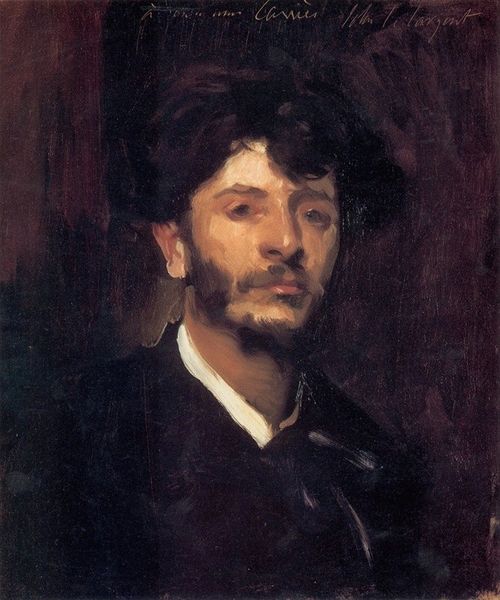
Dimensions: 25 x 21 cm
Copyright: Public domain
Editor: This is Henri Fantin-Latour’s "Self Portrait," painted in 1861 using oil on canvas. I’m struck by its somber tone, the artist’s downcast gaze, and the seemingly unfinished quality of the background. What formal qualities stand out to you in this piece? Curator: The tension between finish and incompleteness certainly commands attention. Observe how Fantin-Latour meticulously renders the face and hair, creating a tactile sense of volume and texture. Consider how the darker, more expressive brushstrokes defining his coat create a contrasting effect. Editor: Yes, the coat seems to almost dissolve into the background, pulling my focus to his face. Is that contrast deliberate? Curator: Precisely. Notice also the restricted palette—primarily browns and creams, which further isolates the head and upper torso. The use of light directs the viewer's focus, establishing a visual hierarchy within the composition. Consider the geometric arrangement; it's far from arbitrary. Do you notice how the slope of the hair echoes the angle of his shoulders? Editor: That's an interesting observation, I see the correlation you’re pointing to. Are you implying there’s some symbolic intention in the way he composed himself in the painting? Curator: It's the structural relationship I'm indicating, yes. The structural unity enhances the overall impact. Consider too the rough texture. This isn’t illusionism; the visible brushstrokes are key. This allows us to read beyond surface appearances. How do you interpret this? Editor: I'd say the texture emphasizes materiality and process, moving away from simply mimicking reality. I can also better understand the structural elements here. Curator: Indeed, the raw texture serves to accentuate the artist's self-awareness in the act of painting. Editor: Thank you. Now, when I look at this self-portrait, I'm noticing more clearly that his gaze is not simply “downcast”.
Comments
No comments
Be the first to comment and join the conversation on the ultimate creative platform.
